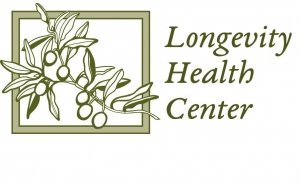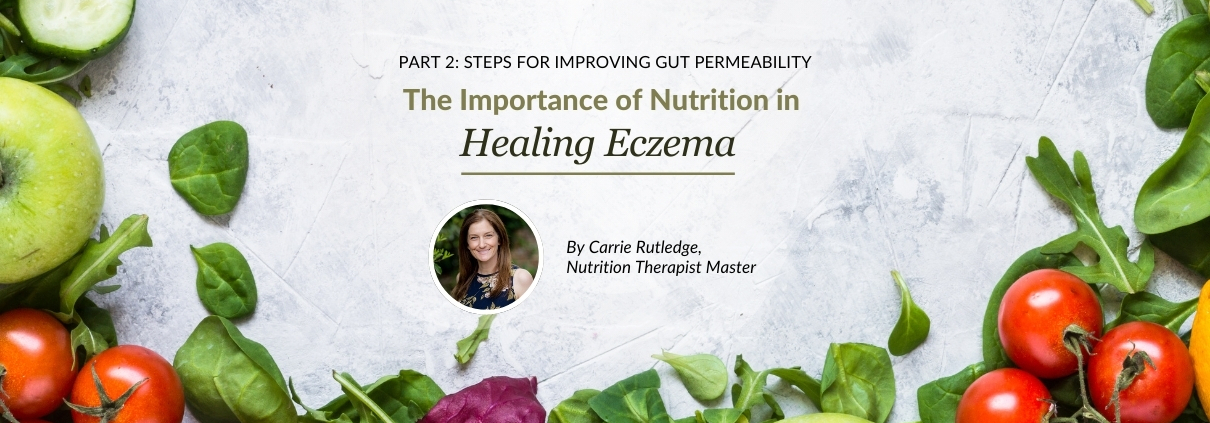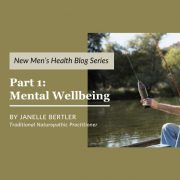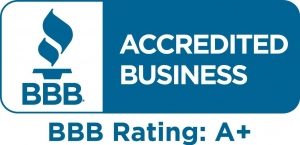The Importance of Nutrition in Healing Eczema
Part 2: Gut Permeability and Chronic Inflammation
By Carrie Rutledge, Nutrition Therapist Master
Gut Permeability and The Immune Response
Hippocrates once said that “All disease begins in the gut”. Studies are increasingly showing that eczema and gut health are linked and when there is an imbalance of gut or skin flora, we now have an inflammatory condition called dysbiosis. This occurs when there are too many pathogenic species, not enough commensal species, and not enough diversity of species. Hence, if you want to heal the skin; you must heal the gut.
Gut permeability is a theory that explores intestinal permeability or impairment as a cause of letting toxins into the bloodstream and as a result, an inflammatory response occurs. Our intestinal barrier performs many critical functions, most importantly, regulating the absorption of nutrients from the gut into the blood while preventing the entry of toxins and microorganisms.
The digestive tract is considered outside the body as both openings of the digestive tract are connected to the outside world. A strong, robust immune system in the GI tract will prevent these pathogens from entering the bloodstream. In fact, 70-80% of all immune cells are found in the GI tract ready to fend off the multitude of pathogenic organisms that enter our body every day.
The digestive tract has a unique job of killing off the pathogenic bacteria while protecting commensal bacteria and antigens which can induce an immune response. IgA antibodies (SIgA) are important for immunotolerance or the immune system’s ability to stay unresponsive to substances that would otherwise elicit an immune response. They can also prevent mass bacteria invasion and intercept invaders that have passed into the intestinal barrier. The microbiome and IgA antibodies have a synergistic relationship as commensal bacteria are an important facilitator of IgA and probiotic supplementation has shown to increase IgA production. 4Low IgA is associated with an increase in allergies, eczema, asthma, food intolerance, UTI infections and gut dysbiosis (imbalance between pathogenic and commensal bacteria). Therefore, if we are seeing these symptoms in ourselves or our children, we can begin taking steps to heal and seal our gut to decrease the inflammatory response.
Healing and Sealing the Gut with the 5R Approach
Step 1: The Removal Process
The removal process consists of getting rid of food items and environmental allergens that are causing toxicity. Finding food intolerances can be tricky; therefore, a more expensive approach is to go through food sensitivity testing and to strictly avoid those foods. You can also do an elimination diet in which you remove the most common allergens from your diet and gradually add them back in after four weeks. The most common allergens to remove will be eggs, dairy, gluten, soy, legumes, nuts, and seeds. After four weeks you will introduce one new food per week and keep track of your body’s response. If you notice a new symptom or previous symptom return, then that food is not tolerable for your system. During the elimination period, acceptable foods include meat, all vegetables expect nightshades, all fruits except citrus, organic white rice, and healthy fats except butter. Removing toxic shampoos, pesticides (especially glyphosate) and sanitizers will also be important to healing the skin and gut microbiome.
The removal process also consists of removing parasites and fungal overgrowth. This can be done with food, herbs, or supplements.
Antimicrobial Foods and Herbs to be Added to the Diet Daily
- Pumpkin seeds
- Coconut oil
- Raw Garlic
- Manuka Honey
- Thyme, Clove, Rosemary, and Ginger
Anti-Parasitic Tea Recipe:
Ingredients:
- 1 Teaspoon Clove
- 1 Cinnamon Stick
- 1 Sprig of Rosemary
- 1 Teaspoon of fresh Ginger
Instructions: Boil all ingredients in purified water for 30 minutes
Step 2: Replace the Digestive Enzymes that May be lacking from Gut Dysbiosis
Once we start to remove foods, toxins and parasites that are causing dysbiosis, we need to start replacing enzymes, vitamins, and minerals for optimal digestive function. For those with heartburn you may not be producing enough hydrochloric acid or HCL, therefore, you may need to supplement as the digestive tract heals. Ox Bile (if you have had your gallbladder removed) is good for supporting the liver and digestion of fats and adding in protease, lipase and amylase will help break down the nutrient dense foods you are now eating.
Foods That Increase Stomach Acid:
- Apple cider vinegar
- Celery juice
- Sauerkraut juice
- Bitters-stimulates HCL, pancreatic enzymes and bile production
- Warm lemon water, dandelion root tea or ginger tea with meal
Foods that Contain Digestive Enzymes
- Honey (amylase and protease)
- Ginger (contains protease)
- Kimchi (contains lipase, protease, and amylase)
- Mango (amylase)
- Papaya (protease)
- Avocado (lipase)
- Pineapple (bromelain, protease)
Step 3: Replacing the Gut with Probiotics and Prebiotic Foods to Increase
Because eczema is an inflammatory disease, our goal in treating the root cause is to lower inflammation internally. Once we have removed pathogenic bacteria and replaced nutrients and enzymes for proper digestion, we want to begin replacing the commensal bacteria with probiotic rich foods and supplements. As we begin to replace, we also want to make sure we are feeding the microorganisms in the gut prebiotics. To qualify as a prebiotic a food must benefit the commensal bacteria as well as benefit you, the host of the bacteria.
Live Probiotic Foods to Include
- Unsweetened yogurt (if you can tolerate dairy add raw honey for sweetener)
- Sauerkraut (for babies you can give a tablespoon of juice daily or use as a salt substitute for meats and vegetables)
- Kimchi, Pickled vegetables, Kombucha, or Kefir, Sourdough
Prebiotic Foods to Include
- Beans, Lentils and Peas
- Raw Garlic
- Leeks
- Apples
- Unripe Bananas
- Cooked and cooled potatoes or white rice
Step 4: Repairing the Lining of the Digestive Tract from Long-Term Inflammation
To prevent toxins and foods from entering the blood stream, it is important to start repairing the mucosal lining of the digestive tract. Two nutrients that help to restore gut health and the epithelial lining are L-Glutamine and Glycine. Herbals to consider including in the diet to support a healthy digestive tract are Marshmallow Root, Deglycyrrhizinated Licorice (DGL), and Slippery Elm.
L-Glutamine: Is an amino acid that acts as a building block for protein. The body relies on L-Glutamine to facilitate healing in conditions of severe metabolic stress, to reduce gastric inflammation, make neurotransmitters, and repair muscles. It also serves in protecting the tight junctions of the gut. Dietary glutamine is found in animal foods such as beef, chicken, pork, raw cheese, milk, and yogurt. A supplement may also be necessary in cases of severe inflammation, poor gut health and lowered immunity. 5
Glycine: Even though glycine is a non-essential amino acid, supplementation has been shown to reduce the development of chronic inflammation and reduce pro-inflammatory cytokines. Glycine is synthesized in the body from choline, threonine, and serine. Foods to incorporate to ensure adequate synthesis of glycine are gelatin, bone broth, poultry skin, dried seaweed, wild caught salmon, and oxtail.
Marshmallow Root: Marshmallow root has been shown to restore a protective lining around tight junctions in the gut as well as treat irritated tissue in the mucous membranes. It is typically consumed through a capsule or tea form and is often used for a wide range of digestive disorders including constipation, colic, and heartburn. Marshmallow root has also been shown to treat atopic eczema.
Deglycyrrhizinated Licorice (DGL): DGL has been shown to maintain and rebuild the intestinal lining of the gut. In studies, DGL is shown to increase the protective mucus in the stomach and esophagus. and protect the liver from nonalcoholic fatty liver disease.
Slippery Elm: Slippery elm is known for its anti-inflammatory properties and helps to form a protective coating in the digestive tract. Studies show that when combined with Glycine, Aloe Vera, Pectin, Peppermint Oil and Glutamine, individuals were able to reintroduce food triggers after 16 weeks of consumption without provoking original symptoms.
Gut Healing Recipes
Bone Broth Recipe
- 1 chicken carcass or marrow bones
- 3 medium carrots
- 3 stalks of celery
- Fresh herbs
- Apple cider vinegar
- Keltic sea salt
Directions: Roast the bones in the oven for 30-45 minutes. Take the bones and add to a dutch oven. Add 2 Tsp of apple cider vinegar, vegetables fresh herbs and sea salt. Cover with filtered water and bring to a boil. Reduce heat and simmer for 12-24 hours. After cooled, strain the broth into mason jars. Use the broth to cook rice, soups, and stews.
Jell-O Recipe
2 cups of organic fresh juice
2 TBSP of gelatin
Raw honey
1/2 -1 Cup of raw fruit or 2 TB of fruit rind (Optional)
Directions: Pour juice into a saucepan and add 2 TBSP of gelatin and stir until it’s dissolved. Turn on heat to medium and let simmer for 5-10 minutes. Turn off heat and let sit for 1 minute. Add in honey and pour into a glass tray. Put into the refrigerator for 3-4 hours.
Step 5: Rebalancing the Gut
Rebalancing is all about following a healthy, long-term goal of reducing stress and supporting a healthy nervous system. Studies show that genetics lay the groundwork for eczema, but it’s the environment that contributes to the expression of the gene and both play a key role in the dysregulation of the nervous system as well as the immune system. A dysfunctional nervous system can contribute to inflammation of the gut as well as the skin. In fact, recent studies show that the skin is a target of the stress response. Psoriasis, mast cell activation, acne, and eczema have all been tied to psychological stress, anxiety, and depression.
The 9 Essentials to Rebalancing your Life for a Healthy Happy Gut:
- Quality Sleep (Adults 7-8 hours, Teenagers 8-10 hours, Children 10-12 hours)
- Food (make sure you sit down and avoid screens for your largest meal)
- Water (filtered from chlorine, pharmaceuticals, and fluoride)
- Exercise
- Healthy relationships
- Mental Health
- Spiritual Health
- Nature
- Have Fun
Do Not Underestimate the Power of Relaxation
Modern American society is too focused on its definition of “success”. Our culture has us believing that success is measured in achievement. It has us running from here to there, competing for this and that all to the detriment of our health. Children today are pressured to perform at levels unseen in history. Driving from activity to activity and rarely getting time to decompress. Being indoors all day and in front of screens has damaging effects on our hormones, especially cortisol. With phones and computers contributing to increased cortisol and acting as a psychological stressor, it is important to wean ourselves and our children off the addictiveness of the screen.
Current studies are showing the power of mind-body therapies as treatment for many chronic diseases including eczema. In fact, stress is the common risk factor for up to 90% of all diseases. When we are stressed, we release more cortisol. High cortisol contributes to increased inflammation. 10,11 Therefore, it is important to practice relaxation techniques. Whatever that looks like in your world, I encourage you to go outside, walk barefoot in the grass, take day trips, explore, meditate, laugh, and have fun
*If you would like to learn more about healing your body through nutrition and lifestyle, please contact me at carrierutledge@gmail.com and set up a free 15-minute consultation to see how we can tailor a plan for you.
**Disclaimer: The information on this website has not been evaluated by the FDA and is not intended to diagnose, treat, or cure any illness. I am a certified Nutritional Therapist Master practitioner, therefore, the information and material in this post is for informational purposes and not intended to treat, diagnose, or cure any illness. Please seek advice from a qualified medical professional regarding any medical condition or diagnosis.










